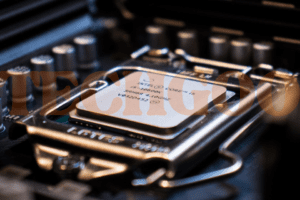DDR5 RAM is significantly faster than DDR2 RAM, with speeds ranging from 3200 MT/s to 6400 MT/s, while DDR2 RAM typically has speeds ranging from 400 MT/s to 1066 MT/s. This means that DDR5 RAM has a much higher data transfer rate than DDR2 RAM, resulting in improved overall performance and faster data processing capabilities.
As technology continues to advance, newer generations of RAM offer significant improvements over their predecessors. One such example is DDR5 RAM, which boasts faster data transfer rates compared to DDR2 RAM. This article will explore the performance differences between DDR5 and DDR2 RAM, highlighting the benefits and advantages of upgrading to DDR5.
Understanding the speed disparities between these two RAM generations is crucial for individuals seeking enhanced computing performance. So, let’s delve into the world of DDR5 versus DDR2 RAM and discover the reasons why DDR5 is a superior choice in terms of speed and efficiency.
Understanding The Basics Of DDR RAM
DDR5 RAM is generally faster than DDR4 RAM, but the actual performance improvements may not be significant in real life. Consider running benchmarks for the specific software you plan to use before deciding if upgrading to DDR5 is worth the cost.
DDR RAM, or Double Data Rate RAM, is a type of random access memory (RAM) that is commonly used in computers and other electronic devices. It is named “double data rate” because it can transfer data on both the rising and falling edges of the clock signal, effectively doubling the data transfer rate compared to its predecessor, SDR RAM (Single Data Rate RAM).
Here are some key points to help you understand DDR RAM:
- DDR RAM operates at higher clock speeds compared to SDR RAM, allowing for faster data transfer rates.
- DDR RAM is classified into different generations, with each generation offering improved performance and features compared to the previous one.
- Each generation of DDR RAM is backward compatible with older platforms, meaning newer RAM modules can be used in older systems.
- DDR RAM modules are available in different capacities, commonly referred to as RAM sticks or DIMMs (Dual Inline Memory Modules).
- DDR RAM modules are designed to be inserted into a compatible memory slot on the motherboard of a computer or other devices.
Overview Of Different DDR Generations
There have been several generations of DDR RAM, each bringing advancements and increased performance over its predecessor. Here’s a brief overview of these DDR generations:
- DDR: The first generation of DDR RAM, also known as DDR1, was released in 2000. It offered double the data transfer rate of SDR RAM and operated at speeds ranging from 100 MHz to 200 MHz. DDR1 RAM modules had 184 pins.
- DDR2: DDR2 RAM was introduced in 2003 and provided increased data transfer rates and improved overall performance compared to DDR1. It operated at speeds ranging from 200 MHz to 800 MHz and featured 240 pins.
- DDR3: DDR3 RAM, released in 2007, further improved data transfer rates and power efficiency compared to DDR2. It operated at speeds ranging from 800 MHz to 2133 MHz and had 240 pins.
- DDR4: DDR4 RAM, introduced in 2014, offered even higher data transfer rates, lower power consumption, and increased module capacities compared to DDR3. It operated at speeds ranging from 2133 MHz to 3200 MHz and featured 288 pins.
- DDR5: The latest generation of DDR RAM, DDR5, is expected to be released in 2021. DDR5 RAM promises significant performance improvements over DDR4, with expected speeds reaching up to 6400 MHz and enhanced power efficiency. DDR5 RAM modules will feature 288 pins.

DDR2 Vs DDR5: Key Differences
DDR5 RAM is significantly faster than DDR2 RAM. With a higher base speed, support for higher-capacity DIMM modules, and improved power efficiency, DDR5 provides a significant performance boost compared to its predecessor.
When comparing DDR2 and DDR5 RAM, there are several key differences to consider. Let’s take a closer look at the performance variations between these two generations:
DDR2 RAM:
- DDR2 (Double Data Rate 2) RAM is an older generation of memory that was widely used in computers from the mid-2000s.
- It operates at a lower clock speed compared to newer RAM types.
- DDR2 RAM has a maximum data transfer rate of up to 800 MHz (megahertz).
DDR5 RAM:
- DDR5 (Double Data Rate 5) RAM is the latest generation of memory that offers improved performance and efficiency.
- It is the successor to DDR4 RAM and offers higher data transfer rates.
- DDR5 RAM has a maximum data transfer rate of up to 6400 MHz, which is significantly faster than DDR2 RAM.
Performance Differences between DDR2 and DDR5:
Increased Speed:
- DDR5 RAM is much faster than DDR2 RAM, thanks to its higher clock speeds.
- DDR5’s improved data rates allow for quicker data transfers, resulting in faster overall system performance.
Higher Capacity:
- DDR5 RAM supports higher-capacity DIMM modules compared to DDR2 RAM.
- This means that you can install more RAM sticks in your system, resulting in better multitasking capabilities and improved performance.
Lower Power Consumption:
- DDR5 RAM is designed to be more power-efficient compared to DDR2 RAM.
- It consumes less power while delivering the same level of performance as the previous generation.
Lower Latency:
- Despite its speed advantage, DDR2 RAM still holds some advantages, such as lower latency compared to DDR5 RAM.
- DDR2’s lower latency enables faster response times for certain applications, especially those that require rapid data access.
DDR5 RAM offers significant performance improvements over DDR2 RAM. With faster data transfer rates, higher capacity support, lower power consumption, and overall improved efficiency, DDR5 is a worthy upgrade for users seeking a performance boost in their systems. However, it’s essential to consider factors such as budget, compatibility, and specific use cases before making the upgrade.
Benchmarks And Real-World Performance
DDR5 RAM is generally faster than DDR4 RAM, but the real-world performance improvements may not be significant. It’s important to consider benchmarks for the specific software you’ll be using to determine if the upgrade is worth the cost.
Importance Of Benchmarks In Evaluating Ram Performance:
- Benchmarks provide valuable insights into the real-world performance of RAM modules.
- They allow users to compare different generations of RAM and make informed decisions.
- Benchmarks measure important factors like speed, latency, and overall system performance.
- They help identify the best RAM for specific applications and usage scenarios.
- Without benchmarks, users might rely solely on marketing claims, which may not accurately reflect real-world performance.
- Benchmarks provide objective data that can be trusted when evaluating RAM performance.
Comparing Ddr2 And Ddr5 Performance In Real-World Scenarios:
- DDR2 is an older generation RAM, while DDR5 is the latest iteration with significant improvements.
- DDR5 offers faster speeds, higher capacity, and better power efficiency compared to DDR2.
- In real-world scenarios, DDR5 can provide a noticeable boost in performance for tasks like gaming, video editing, and multitasking.
- It allows for faster data transfer rates, resulting in quicker loading times and smoother overall system operation.
- DDR5’s improved performance is particularly beneficial for resource-intensive applications and heavy multitasking.
- Users upgrading from DDR2 to DDR5 can expect a significant improvement in their system’s responsiveness and overall performance.
Frequently Asked Questions For How Much Faster Is DDR5 Than DDR2?
How Much Difference Does DDR5 Ram Make?
Compared to DDR4, DDR5 RAM offers higher speeds, supports higher-capacity modules, and consumes less power. However, DDR4 still has advantages in latency and stability.
Is DDR5 Actually Faster?
Yes, DDR5 is faster than DDR3 with data transfer rates ranging from 3200 MT/s to 6400 MT/s.
How Much Faster Is DDR5 Than DDR3?
DDR5 RAM has significantly faster data transfer rates compared to DDR3 RAM. DDR3 typically ranges from 800 MT/s to 1600 MT/s, while DDR5 ranges from 3200 MT/s to 6400 MT/s.
How Fast Can DDR5 Ram Get?
DDR5 RAM is much faster than DDR3 RAM, with data transfer speeds ranging from 3200 MT/s to 6400 MT/s.
Conclusion
DDR5 RAM offers significant performance improvements compared to DDR3 RAM. The data transfer rates of DDR5 RAM are much faster, ranging from 3200 MT/s to 6400 MT/s, whereas DDR3 RAM typically operates at speeds between 800 MT/s to 1600 MT/s.
This increase in speed allows for quicker data access and processing, resulting in improved overall system performance. However, it’s important to consider whether the upgrade to DDR5 RAM is worth the cost, as the actual performance improvements may not be significant in real-life usage scenarios.
Benchmarks specific to the software you use will provide a more accurate assessment of the benefits. Ultimately, the decision to upgrade to DDR5 RAM should be based on your specific needs and budget. Stay informed about the latest advancements in RAM technology to make an informed decision and ensure optimal performance for your system.




